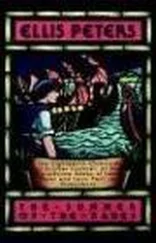Hester Pitt, the new Lady Mahon, was twenty and had been married for just over a year. She herself had been named after her mother, the redoubtable Lady Chatham, formerly Lady Hester Grenville. The Pitts were fond of the name, thinking it unusual and unconventional. The choice of her daughter’s middle name – Lucy – for her great-grandmother, also leaned towards her mother’s side of the family.
Within hours, news of Hester’s arrival was sent to Lord Mahon’s parents at Chevening, as well as to the Chathams and the Pitts. Charles’s mother, Lady Grizel Stanhope, immediately left for London so she could make herself useful, no doubt leaving her husband, Philip, the second Earl Stanhope, buried in his library. If ever a woman could be described as a dominant matriarch, it was shrewd Scottish-born Grizel, who supervised the day-to-day running of the family estate with a precision and fortitude that marked her out as an exceptionally well-organized woman. She would have been a comforting presence for the anxious new mother. 1
Grizel was delighted to note the tenderness evident in her son. She thought his comment, on seeing his naked daughter being dressed, that he hoped ‘no other gentleman will ever see her in’ such ‘attitudes’, amusing enough to pass on. 2
Hester Pitt, then nineteen, optimistic, pretty and popular by all accounts, had married her cousin, Charles, two years her senior, tall, lanky and angular-featured, at the end of 1774. The family connection was dismissed as relatively unimportant, a commonplace amongst aristocratic families. Their grandparents, Lucy Pitt and James, first Earl Stanhope, had married in 1713, producing six children, including Charles’s father, Philip. Therefore, when both sides of the family were peering into the crib to look upon the newly-born Hester, it was entirely debatable whether the Pitt and the Stanhope noses were merely variations of the same.
Had it not been for a stone found on the northern banks of the Krishna river near the medieval city of Hyderabad three-quarters of a century before, Hester Stanhope’s parents might never have met. It was no ordinary stone, but a diamond that weighed 410 carats, the largest of all Indian diamonds in its rough form. It was this discovery, and the tremendous fortune it bestowed upon its owner, Hester’s great-great-grandfather – the supremely wilful and enterprising Thomas Pitt – that made the family fortune. Without it, perhaps the histories of the Pitts and the Stanhopes would not have collided the way that they did, setting the seal on the earlier marriage between the two families and bringing Hester Pitt and Charles Stanhope into each other’s orbits.
Thomas Pitt, then Governor of Madras, acquired the stone that would be known as the Pitt diamond from an Indian trader for 48,000 Indian pagodas which was some £20,400 at the time. Pitt was already a shrewd investor in substantial quantities of gems and gold as a means of easily transporting his accumulated wealth back to England. He knew this stone had been smuggled out from the arid, boulder-strewn Deccan plateau, from one of a cluster of the Golconda mines, but he could not have foreseen that the stone would make his name; that ever after he would always be known as ‘Diamond Pitt’.
By the time it sat like a bulbous paperweight on his teak desk at Fort St George in the East India Company’s garrisoned White Town, the diamond had a whiff of scandal attached to it. The story went that it had been smuggled out of the Mughal Emperor’s lands by a slave who had slashed open his thigh and concealed it in the wound. At least one man had been murdered for it. The slanderous chatter about how Pitt came by his impressive rock would follow him to the grave, and even find its way into his funeral oration. 3
When Thomas Pitt finally saw his stone after it had been cut with great skill over two years by Messrs. R.H. Long & Steele in London at a cost of £6,000, he was ecstatic. It was a 136-and-a-half-carat cushion brilliant, reflecting the light in lozenge-shaped and triangular facets, with only one very small imperfection. By any estimation it was the most beautiful blue-tinged stone, the colour of a dawn sky and the size of a large cherry. Valued at £125,000, it was acknowledged as the finest and largest of all Indian brilliants.
Sold to Philippe, the Duke of Orleans, Prince Regent of France, for the sum of £135,000, it became known as the Regent diamond, and was placed as the centrepiece of the crown worn for the coronation of King Louis XV in 1723. Two generations later, Marie Antoinette adored it at first sight, and wore it frequently, sewn into her large black velvet hat. Once it was in Napoleon’s possession, he had it placed in his sword, which he wore for his coronation in December 1804. When his second wife, the Austrian Archduchess Marie-Louise, was forced to leave Paris with her family as fugitives in 1813, she took the diamond with her; it was later returned to France by her father, the Austrian Emperor Francis I. It was placed back into the French crown for the coronation of Charles X in 1825, and was taken out again so that the Empress Eugenie, wife of Napoleon III, could wear it as a diadem in her hair.
During World War II, as the Nazis reached the outskirts of Paris, it was smuggled to the Château du Chambord in the Loire, where it was hidden behind a stone panel for the duration of war. Today, Pitt’s priceless diamond – sometimes called the Millionaire Diamond – can be seen in the Apollon Gallery at the Louvre.
In many ways, the diamond that had shaped the fortunes of Hester’s family, and its trajectory through the changing fortunes of France’s rulers, would become a potent symbol of the power and glory – abroad – that she herself would spend her entire life seeking.
There can be no mistaking the fact that Hester Stanhope came from a family of passionate egotists. She lived with the perpetual awareness that not only was she descended from a line of exceptional achievers, but also that the traits they had in common represented her best characteristics: the ability to think and act for themselves, often in a highly unconventional way, and sometimes in the face of considerable public scorn. Added to this was a family propensity towards imperiousness, extravagant behaviour and quixotic ambition, which sometimes tilted towards an unbalanced and volatile temperament. At least one Pitt had been shut away in a mental asylum. It had been observed that there was ‘a great degree of madness in the family’.
Yet nothing out of the ordinary seemed to distinguish the earlier Pitt clan. They knew themselves to be descended from the Pitts in Hampshire and Dorset, mostly gentry, with several eminent local magnates among them. It was the family fortune-maker, Thomas ‘Diamond’ Pitt, who set the trend for greatness. In 1673, when Thomas Pitt had just turned twenty, much to the disquiet of his mother he announced he was taking off for India, joining the East India Company as a lowly clerk. His beginnings were humble: a trading practice on the salty banks of Balasore, a fetid but profitable British cantonment in Orissa. But not content with slaving for the Company, he absconded and began to buy goods from Indian merchants, shipping them back to England on his own account. He also made the first of many trips to Persia, primarily on the lookout for well-bred horses. There was nothing that so riled the East India Company as a turncoat agent like Pitt. But he showed himself to be a skilled negotiator, capable of passionate, even brutal fits of ranting, but expressed with such force and persuasion that he quickly established a kind of rogue authority. Even his rivals admired his energy, his belief that the future of England’s success in the world depended on opportunistic profit-seekers like him. In the end the East India Company decided they had better have him on their side. Pitt was able to buy respectability along with the medieval borough of Old Sarum in Wiltshire, for which he later successfully ran as Member of Parliament. 4 In 1698, following a parliamentary ruling that relaxed restrictions on trade in India, allowing interlopers to follow Pitt’s example and deal freely, the Company decided to appoint none other than their notorious old adversary as Governor of Madras. For eleven years, the Madras Residency echoed with his blustering rages. Family legends about Diamond Pitt’s bombastic personality were picked over for generations.
Читать дальше












